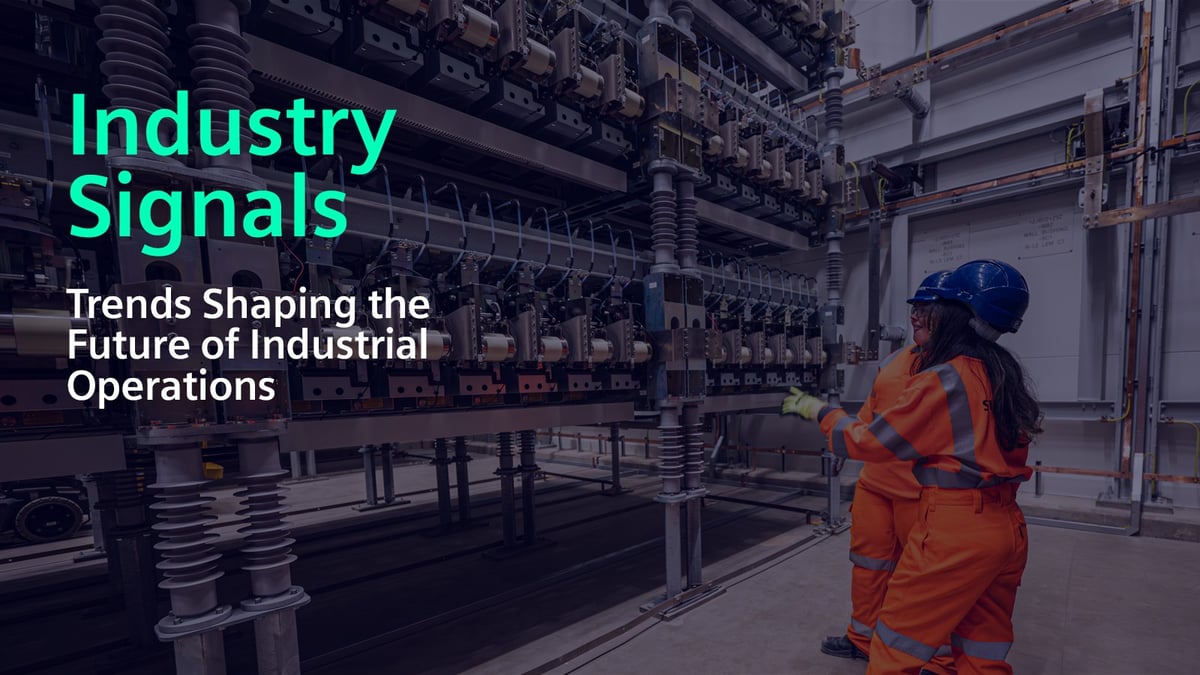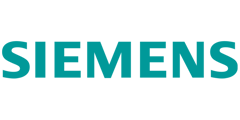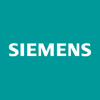Sustainability
July 8, 2025
Industry Signals - July 8, 2025: Industrial Electrification: Implications, Risks, and Strategies for Manufacturing’s Sustainable Future

# Digital Manufacturing
# Digital Transformation
# Electrification
# Energy
# Factory of the Future
# Food and Beverage
# Innovation
# Renewable Energy
# Smart Cities
# Smart Manufacturing
# Sustainability
Industrial Electrification is redefining how manufacturers operate: integrating clean electricity, digital systems, and grid innovation to unlock competitive advantage, operational resilience, and sustainable growth.

Industry Signals

Welcome to another edition of Industry Signals. In this issue, we examine Industrial Electrification: a systemic transformation reshaping how manufacturers power operations, integrate digital technologies, and drive sustainability at scale. As electrification moves from ambition to implementation, it is emerging as a cornerstone of industrial strategy, linking decarbonization with operational agility, cost stability, and long-term competitiveness.
The insights in this edition cut through the complexity, moving beyond narrow debates on grid readiness or ROI. Industrial electrification is already delivering tangible outcomes, accelerating process innovation, enabling low-carbon product differentiation, and redefining the relationship between energy systems and factory floors.
Inside, you’ll find critical insights drawn from recent large entity publications:
- Siemens’ perspective, Accelerating the Electrification of Everything, outlines the urgent need to pair electric technologies with digital automation and grid modernization to scale impact across industries.
- The U.S. Department of Energy’s Industrial Electrification Technologies guide offers a clear roadmap for manufacturers to transition from combustion to electric systems, with practical guidance on integration and risk mitigation.
- The European Commission’s call to “Electrify Europe” emphasizes policy alignment and demand-side flexibility as key enablers of clean industrial growth.
- IEA’s Electricity 2025 analysis highlights global demand trends and the critical role of renewables and electrification in stabilizing emissions.
Together, these insights underscore industrial electrification not as a single solution, but as an orchestrated shift requiring new partnerships, adaptive infrastructure, and a digitally fluent workforce. The future is electric, and it's already underway.

The Imperative for Industrial Electrification
Manufacturing leaders today face mounting pressure to decarbonize operations and products. Electrification of industrial processes has moved from an option to a strategic necessity in order to meet climate targets and maintain competitiveness. Industrial activities account for roughly 20–30% of global CO₂ emissions, much of it from burning fossil fuels for heat. The good news is that a large share of this energy use can be electrified with cleaner power: existing technologies could electrify about 60% of industrial heat demand today, and emerging solutions by 2035 could raise that to ~90%. Yet as of 2020, only a few percent of industrial heat had been electrified, highlighting a huge opportunity for transformation.
Shifting from combustion to electric technologies (e.g. heat pumps, electric boilers, electric arc furnaces, EV fleets) offers a double benefit. First, it slashes direct emissions, especially as power grids decarbonize. Second, it can improve operational efficiency and control. Electric equipment often provides better precision, safety, and flexibility than fossil-fueled counterparts.
Moreover, by powering industries with diversified clean energy sources, companies can reduce reliance on volatile fossil fuel markets. In Europe, for example, greater electrification is seen as key to reducing exposure to global gas price shocks and strengthening energy independence. Leading manufacturers also recognize that investing in electrification opens doors to innovation, from new electric product lines to process modernizations, that can spur growth and “green premium” revenue in emerging clean markets.
Future State Implications for Manufacturing
Electrification will reshape not only how manufacturers power their operations, but how they design, manage, and compete. It introduces new operating models, connects facilities more directly with the energy system, and demands a digitally fluent workforce to unlock its full potential.
- Energy integration and flexibility: Electrified factories will optimize energy through onsite generation, storage, and smart controls. Participating in grid services could transform energy from a cost center to a strategic asset.
- Digital transformation: Electric systems integrate more easily with digital platforms, enabling automation, predictive maintenance, and real-time optimization.
- Market differentiation: Early adopters can deliver certified low-emissions products, gaining advantage under emerging carbon pricing and green procurement policies.
- Workforce evolution: New roles in electrical systems and digital energy management will emerge, requiring focused reskilling and talent development.
Key Challenges and Risks
While the promise of industrial electrification is substantial, manufacturers must navigate several systemic risks that could undermine adoption or delay progress. These risks span energy pricing, infrastructure, technology readiness, financial exposure, and market dynamics.
- Electricity costs & volatility: Uncertainty in energy pricing, especially in Europe, could hinder competitiveness and project viability.
- Infrastructure limitations: Both internal plant upgrades and external grid constraints pose significant hurdles.
- Technology maturity: Some high-heat or flame-based processes still lack viable electric alternatives.
- Policy & investment uncertainty: Unpredictable incentives and regulatory shifts complicate long-term planning.
- Green premium challenge: Costlier low-carbon products may face market resistance unless carbon policies level the field.
Strategies for a Successful Electrification Transition
Despite the challenges, there are clear strategies that manufacturing leaders can adopt to drive industrial electrification forward while mitigating risks. Forward-thinking firms, together with policymakers and partners, are pioneering approaches such as:
- Collaborate in clusters: Pool resources and infrastructure in industrial hubs to scale clean energy and reduce costs.
- Leverage public-private finance: Tap grants, tax credits, and innovative OpEx models (e.g., energy-as-a-service) to lower CapEx barriers.
- Secure clean energy: Lock in long-term renewable PPAs, invest in onsite generation, and advocate for favorable energy pricing.
- Strengthen supply chains: Partner early with technology providers to tailor solutions and standardize electrification approaches.
- Cultivate demand for green products: Certify and market low-carbon outputs; seek offtake agreements and support favorable procurement standards.
- Engage in policy shaping: Advocate for clear electrification targets, stable incentives, and aligned industrial-energy planning.
- Reskill the workforce: Launch programs to build capacity in electric systems and digital tools for energy management.

Electrification of industry remains in early stages, but the technical potential is enormous. For example, studies in Europe show only a small share of industrial energy demand is electrified today (black bars), while existing technologies could raise electrification well above 40–50% in major economies (blue bars). Realizing this potential will require coordinated investments in technology, infrastructure, and skills.

The European Commission’s Mission to Speed Up Industrial Electrification
The European Commission’s article on “Electrifying Europe” emphasizes that expediting electrification is essential for Europe to reclaim industrial competitiveness, reduce dependence on volatile global energy markets, and accelerate decarbonization under the Clean Industrial Deal. By leveraging low-carbon electricity, digitalization, and demand-side flexibility, the EU can transform energy-intensive sectors into engines of growth and innovation.
Key Ideas:
- High electricity prices threaten competitiveness: European industries pay two to three times more than US counterparts, hampering growth and innovation.
- Electrification delivers a dual benefit: It not only slashes emissions but also enhances energy security and job creation in the clean-tech sector.
- Demand‑side flexibility is vital: Implementing flexible electricity consumption solutions could reduce CO₂ emissions by over 40 Mt annually by 2030 and save the EU/UK around €10.5 billion per year.
- Clean industrial deal & affordable energy action plan: These frameworks aim to stabilize energy prices, establish clean-tech lead markets, and unlock public‑private investment in infrastructure.
- Policy clarity needed: Success hinges on binding measures for energy taxation and network charges, and ensuring benefits reach broader manufacturing, not just large energy-intensive players.
To secure its future as a clean-tech powerhouse, Europe must treat electrification not only as a climate imperative but as a strategic economic and industrial priority anchored in robust policy frameworks, market reforms, and sector‑wide deployment.

Siemens’ Point of View on Industrial Electrification

Siemens’ whitepaper Accelerating the Electrification of Everything presents a pragmatic yet urgent vision for decarbonizing the industrial, mobility, and building sectors through widespread electrification. Our position is rooted in the belief that the necessary technologies already exist and the challenge now is scaling and integrating them fast enough to meet climate goals.
Key Ideas from Siemens:
- Electrification as the most viable decarbonization path: Siemens frames electrification as one of the most immediately deployable and scalable strategies to reduce emissions, particularly when paired with renewable electricity. Electrifying now enables emissions to fall over time as grids decarbonize.
- Digitalization is a critical enabler: Electrification must be paired with digital control systems. Siemens advocates for smart automation, real-time monitoring, and digital twins to optimize energy use, reduce waste, and manage load flexibility.
- Grid infrastructure is the bottleneck: Siemens highlights a major constraint: the existing power grid isn’t built for the coming surge in demand from electrification. We project that global electricity demand will double (and peak demand will triple) by 2050. The solution: accelerate grid expansion and modernization, especially at the distribution level.
- Electrification of industry requires complex transformation: For manufacturing and process industries, Siemens supports full-chain electrification, including building infrastructure, production processes, and transport fleets. We recognize that not all high-temperature processes can be electrified today and recommend complementary solutions like green hydrogen and biomethane.
- Buildings and mobility also demand attention: Siemens notes that fully electrified buildings (leveraging heat pumps, building automation, and on-site renewables) can dramatically cut emissions. Similarly, electrified transport, particularly light and medium-duty fleets, can deliver rapid decarbonization if the grid is ready to support it.
- Systemic grid redesign required: We emphasize that the shift away from centralized fossil fuel generation (with inherent grid-stabilizing inertia) to distributed renewable sources requires a wholesale redesign of grid architecture. Power electronics and inverter-based systems must replace traditional rotating mass for frequency stability.
- Call for agility in planning: Siemens calls for an end to slow, rigid planning cycles. Instead, we advocate for agile, modular upgrades to electrical infrastructure and faster regulatory approval for digital grid solutions and smart investments.
- Immediate investment needed: We estimate that trillions in public and private investment will be needed to avoid bottlenecks and seize the electrification opportunity. The urgency is clear: future emissions reductions in industry and transport depend on rapid progress in the electricity sector today.
Strategic Recommendations from Siemens:
- Scale renewable generation and storage to match surging demand.
- Upgrade and digitalize grid infrastructure, especially distribution networks.
- Support grid flexibility via demand response and AI-driven load management.
- Electrify industrial processes wherever feasible, complemented by hydrogen and biofuels where needed.
- Leverage building automation and smart controls to cut energy use.
- Adopt agile planning and regulatory reforms to speed implementation.
- Foster cross-sector collaboration (e.g., between TSOs, DSOs, manufacturers, and policymakers).
- Frame electrification as a growth opportunity, not just a compliance obligation.
This perspective aligns closely with broader trends across industry, offering both a technical and systemic lens on electrification. Where Siemens is particularly strong is in tying electrification to grid modernization and digital infrastructure—areas that many industrial leaders may underestimate or underprioritize. Our emphasis is on agility, infrastructure readiness, and holistic planning. Electrification is as much a coordination challenge as a technical one.

IEA's Electricity 2025 Executive Report: Sustaining Transformation

The International Energy Agency’s Electricity 2025 Executive Report analyzes and forecasts trends through 2027, painting both the challenges and openings for the industrial and energy sectors, focusing on the decisive question: can we secure, clean, and flexibilize electricity systems fast enough to sustain transformation?
Key Highlights:
- Unprecedented growth in electricity demand: Global electricity consumption surged 4.3% in 2024 and is expected to grow nearly 4% annually through 2027, adding roughly 3 500 TWh—equivalent to powering a country the size of Japan each year.
- Renewables and nuclear fully meet new demand: It is predicted that over 95% of new electricity needs by 2027 will be met by low‑emissions sources: solar PV alone is expected to contribute around 50% of growth, while wind and nuclear also play major roles.
- CO₂ emissions plateau despite flat fossil generation: Emissions from power generation are projected to level off (around 13 800 MtCO₂ in 2024) as renewables displace coal (coal’s share drops below 33% for the first time in over a century).
These highlights underscore critical strategic takeaways:
- Demand growth is both rapid and concentrated, challenging current infrastructure and system flexibility.
- Clean energy investments, notably in solar, wind, nuclear, and grid/storages, are pivotal to ensuring that this growth is sustainable and decarbonizing.
IEA also provides a Monthly Electricity Statistics report, which provides a free dataset and highlights of monthly electricity production. They also produce several newsletters, including newsletters on topics like energy efficiency and clean energy transitions, and a podcast on the biggest energy topics of today (Everything Energy).

U.S. Department of Energy's Industrial Electrification Booklet: Electrifying Industrial Processes

The U.S. Department of Energy’s Industrial Electrification Booklet, published April of 2025, provides a clear, practical guide to electrifying industrial processes, detailing key technologies such as electric boilers, high-efficiency heat pumps, induction heating, and electric furnaces. It outlines each technology’s applications, benefits, limitations, and integration potential, equipping plant managers and engineers with a roadmap to transition fossil-heat systems toward clean, electric alternatives for decarbonization and efficiency improvement.
Key Highlights:
- Tech Overview & Comparisons: A summary of core electrification technologies (e.g., electric boilers, heat pumps, microwave and induction systems, arc furnaces), including performance metrics, efficiencies, and cost considerations.
- Application Guidance: A description of which industrial processes, such as low/medium-temperature heating, drying, melting, are suitable for each technology, aiding targeted decision-making.
- Benefit-Limit Analysis: Highlights of multiple advantages, like reduced emissions, greater control, better efficiency, but also integration challenges like infrastructure readiness or capital expenses.
- Integration Potential: Insights on blending electrification with existing systems, emphasizing hybrid setups and phased approaches to minimize disruption.
- Strategic Planning Resource: A structured framework for assessing industrial electrification adoption, backed by technology summaries and practical evaluation steps.
Looking Ahead
Industrial electrification is no longer a question of if, but how, and how fast. For manufacturers, it presents not only a critical decarbonization lever but also a catalyst for operational agility, resilience, and long-term competitiveness. While the journey involves navigating infrastructure constraints, upfront costs, and evolving policy landscapes, the strategic imperative is clear: those who act decisively today will shape the industrial economy of tomorrow.
Success will hinge on scaling deployment from pilot to platform, aligning electrification with digital transformation, and building robust ecosystems with utilities, policymakers, and technology providers. Siemens is uniquely positioned to support this shift, offering integrated solutions that span electrified systems, smart automation, grid readiness, and energy optimization. By partnering with innovators like Siemens and committing to bold, coordinated action, manufacturers can lead the transition to a cleaner, more adaptive industrial future, turning electrification from a compliance challenge into a strategic advantage.

That’s a wrap for this edition of Industry Signals.
Have a report, use case, or event you'd like to see featured in an upcoming issue? Send a note via PM. We’re always looking to spotlight what’s shaping the future of industry and find recommendations from the Xcelerator Community especially valuable. Your insights and experiences continually shape Industry Signals.
— Industry Signals Community Editor
1
Comments (0)
Popular
Popular
Blog
Industry Signals - June 10, 2025: Technology Convergence and the Key Role of Digital Twins
By Industry Signals
Dive in
Related
Blog
Industry Signals - July 22, 2025: The Future of Work: Taking a Human-Centered Approach to Industrial Intelligence
By Industry Signals • Jul 22nd, 2025 • Views 144
Blog
Industry Signals - November 11, 2025: Autonomous Robots, Flexible Warehousing, and Industry Standards
By Industry Signals • Nov 11th, 2025 • Views 54
Blog
Industry Signals – October 7, 2025: How Industrial Leaders Are Rewiring for AI
By Industry Signals • Oct 7th, 2025 • Views 82
Blog
Industry Signals - June 24, 2025: Unlocking the Industrial Metaverse & Accelerating Digital Transformation Across Industries
By Industry Signals • Jun 24th, 2025 • Views 122
Blog
Industry Signals - July 22, 2025: The Future of Work: Taking a Human-Centered Approach to Industrial Intelligence
By Industry Signals • Jul 22nd, 2025 • Views 144
Blog
Industry Signals – October 7, 2025: How Industrial Leaders Are Rewiring for AI
By Industry Signals • Oct 7th, 2025 • Views 82
Blog
Industry Signals - June 24, 2025: Unlocking the Industrial Metaverse & Accelerating Digital Transformation Across Industries
By Industry Signals • Jun 24th, 2025 • Views 122
Blog
Industry Signals - November 11, 2025: Autonomous Robots, Flexible Warehousing, and Industry Standards
By Industry Signals • Nov 11th, 2025 • Views 54

